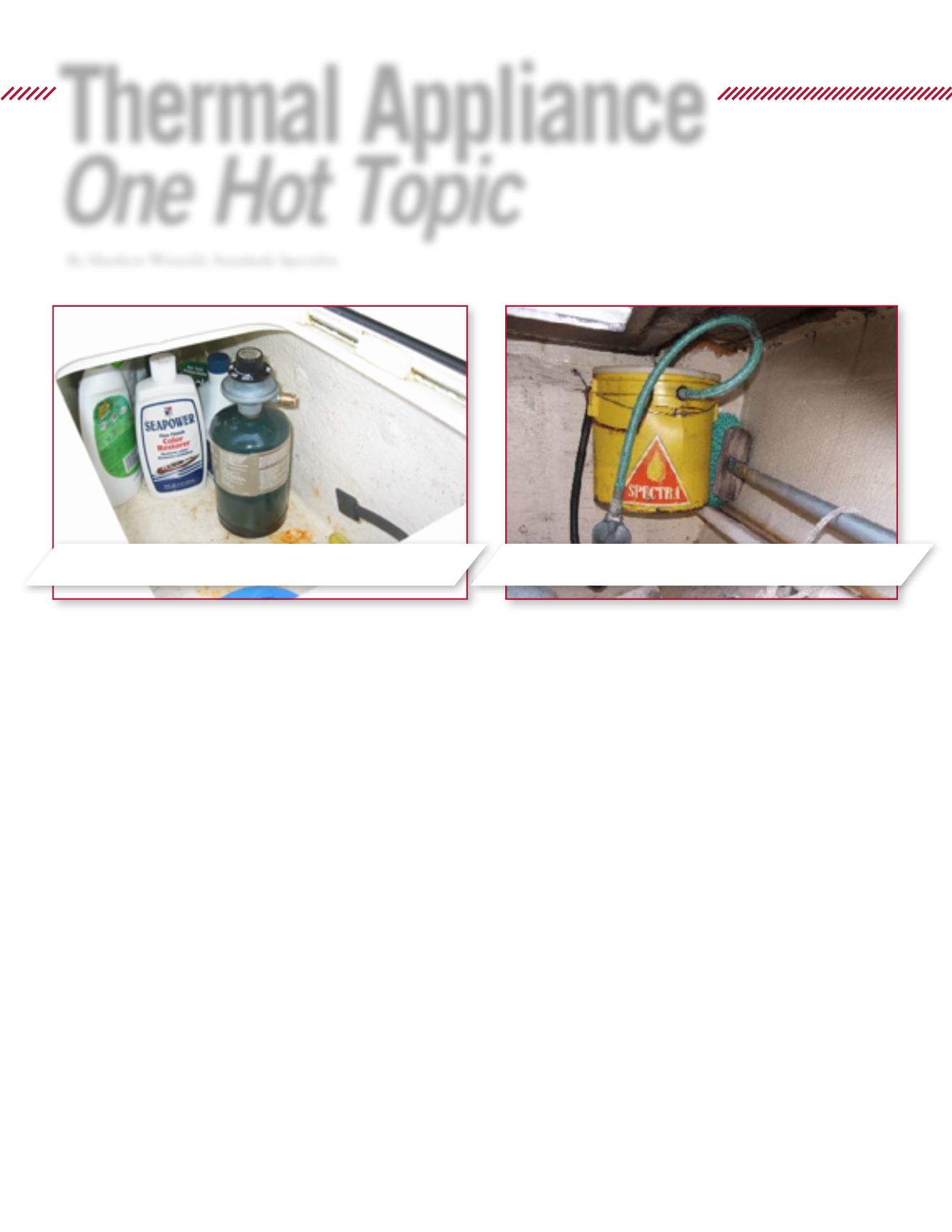
View past issues of
the Reference Point
• online at
9
C
heesy puns aside, the last
few weeks have shown that
standards based questions are
contagious making Thermal Appliance
and more specifically Liquid Petroleum
Gas (LPG) Systems, one
Hot Topic
. I have
on more than one occasion answered
the same question multiple times in
one day.
With LPG being the dominant cooking
and heating fuel for boats in the US,
it’s easy to see wild fluctuations in how
fuel systems and appliances are installed
from boat to boat. Many installations
are thoroughly thought out with every
safety precaution being made and every
detail of the standards being observed.
Unfortunately there is no shortage of
improperly installed systems as well.
The results of improper installations can
be catastrophic.
Since LPG is heavier than air, when
released into a boat it settles in the
lowest spot it can find and will invisibly
overflow from one compartment into
another through shared airspaces. The
slightest spark in that pool of invisible
gas will ignite the fuel and the resulting
flame travels at 2,800 feet per second
and can burn at nearly 3,500°F. So there
is good reason to be cautious with this
fuel. Much like natural gas in our homes,
an odor is added to help notify the user
when a leak may be present. For that to
be valuable, however, there must be a user
on-board the vessel that can recognize
something is wrong and shut off the fuel.
The most common cooking appliance
installation is the portable rail mounted
grill with a 16.4OZ bottle screwed into
the side. With the simplicity of this
installation, any leakage that may occur
merely leaks overboard; but did you know
that the canisters are subject to the same
requirements as the larger permanent
cylinders? The capacity of the portable tank
exceeds the maximum allowable for interior
storage as required in A-30 Cooking
Appliances with Integral LPG Cylinders.
Looking towards the larger permanent
installations, storage cylinders need a
dedicated locker that does not share air
space with the hull interior and vented
at the bottom of the locker draining only
outboard (above the waterline). We often
see LPG lockers used to store additional
items like cleaning supplies, fenders, and
mooring lines because of the locker’s
convenience to the cockpit. A-1 (Marine
Liquefied Petroleum Gas Systems)
strictly prohibits this in order to limit the
possibility of the drains being plugged.
A-1 goes on to require that all appliance
fuel lines must originate inside the locker
and be dedicated for each appliance
Thermal Appliance
One
Hot Topic
By Matthew Wienold, Standards Specialist
Portable 16.4OZ fuel bottles such as this are treated
just like the large cylinders and require ventilation. Photo: Undisclosed
A poor attempt at a LPG locker.
Photo: ABYC Member, Captain Wallace Gouk


